Elasmosaurus is a genus of long neck plesiosaur from the Late Cretaceous and lived in what is known today as North America in one of the most famous ancient sea, the Western Interior Seaway.It rivals Plesiosaurus itself in both fame and name recognition, as well as being one of the most produced marine reptiles in toy form. It also enjoyed additional fame when it was prominently featured in the legendary Bone Wars between rivals Marsh and Cope, who could forget that famous restoration when its head was famously and erroneously placed at the tip of its tail!No wonder Elasmosaurus has reached iconic status, lets face it, we love dramatic rivalry!

In the toy figure world, the majority of companies usually have one or both of these long necks represented in their prehistoric collection. It’s one of those must-haves in a collection and always a crowd pleaser.CollectA is well known for breaking the norm when choosing species representation, often going for the obscure and least popular genus instead of the old standard. This was true when they released their first Plesiosaur, opting for the obscure Hydrotherosaurus as their first, then followed by the enigmatic Attenborosaurus and Thalassomedon as their second and third. It is only now in 2021 that they have circled back and gave this perennial icon the CollectA treatment.
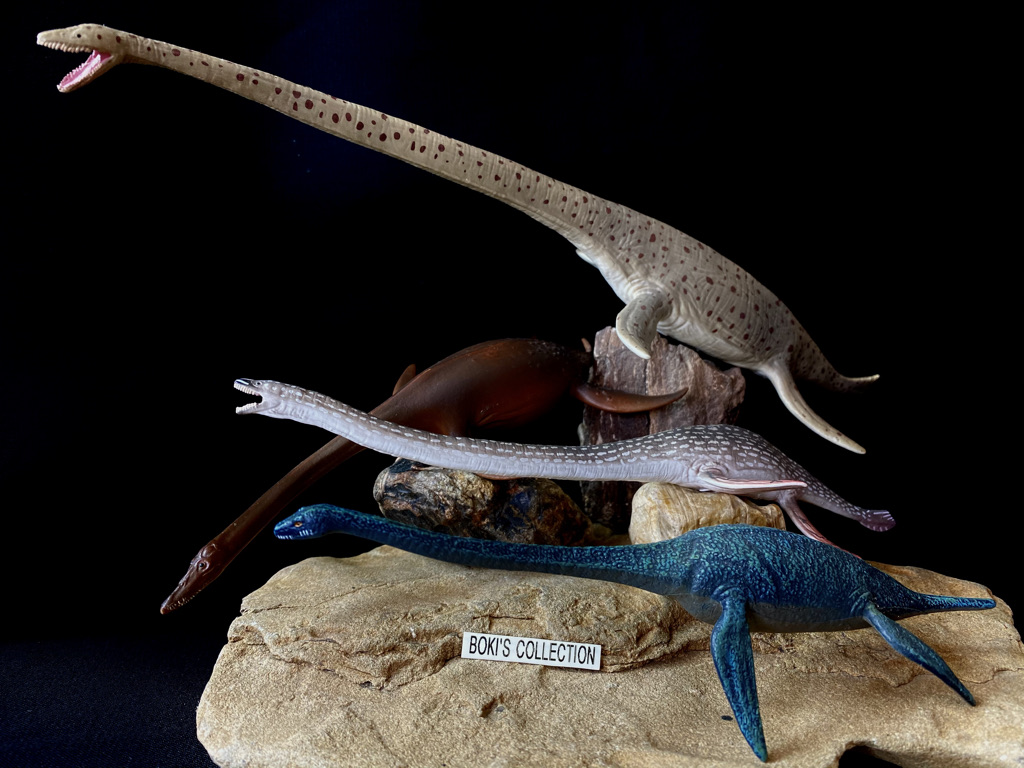
Like most Elasmosaurids, Elasmosaurus had a streamline body, extremely long neck for which they are famous for, large paddle-like limbs, small triangular head, and a short tail.All of these features are captured perfectly by this CollectA figure in exquisite detail.Ironically, despite its fame, Elasmosaurus is based on a single and very fragmentary fossil material. Most of the basis for its restoration are based on its close relatives.
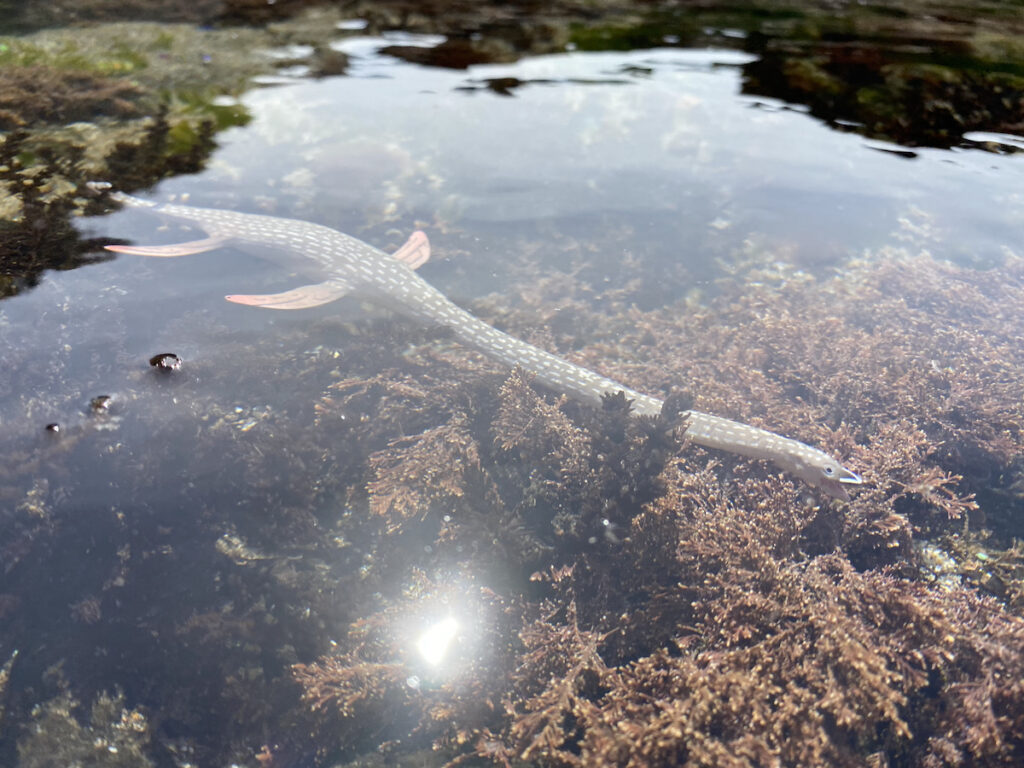
Like the land-dwelling Sauropods, Elasmosaurus’s head is small and attached to a very long neck. CollectA did an amazing job sculpting the head on this figure. Despite its small size ( just slightly larger than a mini-Kaiyodos), the head is full of details. The head perfectly captured the slender triangular shape. The eyes are placed in the right location and painted glossy black, with little wrinkles encircling it. The nostrils are placed just before the eyes and nicely sculpted; you can also see the ears, a subtle hole, just after the eyes.There is plenty of delicate little details on the head such as lines and skin folds, and most importantly, it is not shrink-wrapped.

The mouth is open, and you can see the teeth which are sculpted individually. Now, Elasmosaurus had pointy fang-like teeth at the front; on the figure this distinct detention is not fully captured. This is due to the small size of the figure and its head which measure barely half an inch long (1 cm); it is simply not possible to sculpt those needle-like teeth on a mass-produced PVC figure of this size. The Molding process would not fully capture such delicate and small teeth unlike a prototype sculpt. For comparison, the Safari version’s head is twice the size of this figure allowing for bigger teeth to be sculpted, but even then you see it has suffered from the molding process.On the plus side, the teeth are very well sculpted and, on my copy, they are painted cleanly without any sloppy drips or globs, and can even see inside the mouth a small tongue.
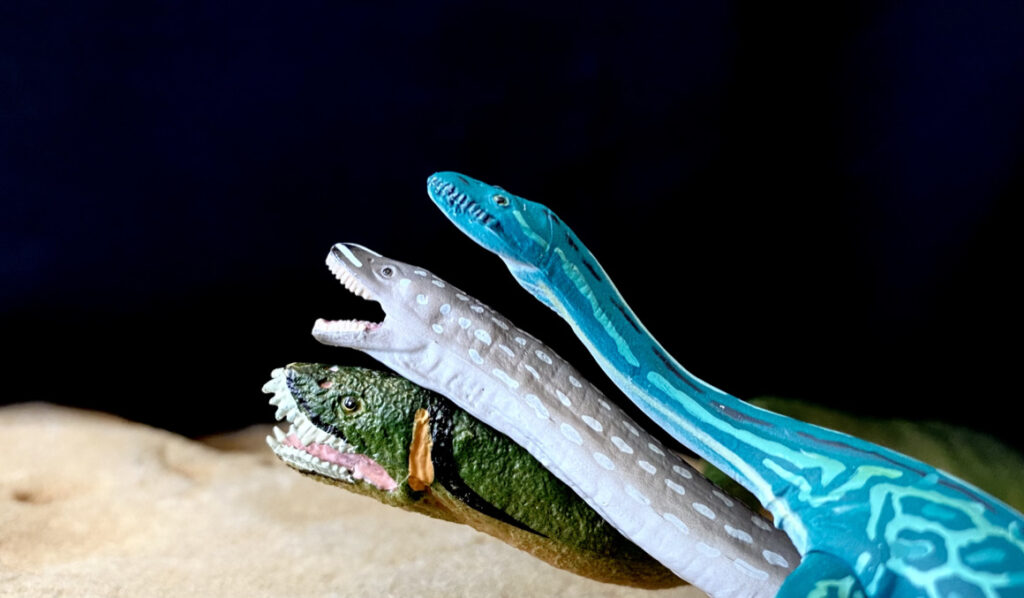
Elasmosaurus has one of the longest necks of any known animal, and the model perfectly captures this unique feature. At the base of the jaw there is a pouch-like skin, very similar to what you would see on a pelican and other fish-eating animals. This fold of skin hangs just below the neck vertebra and is beautifully sculpted with lots of wrinkles that suggest elasticity. Behind the head you will see some skin folds before it transition to more smooth looking as you go down the long neck.
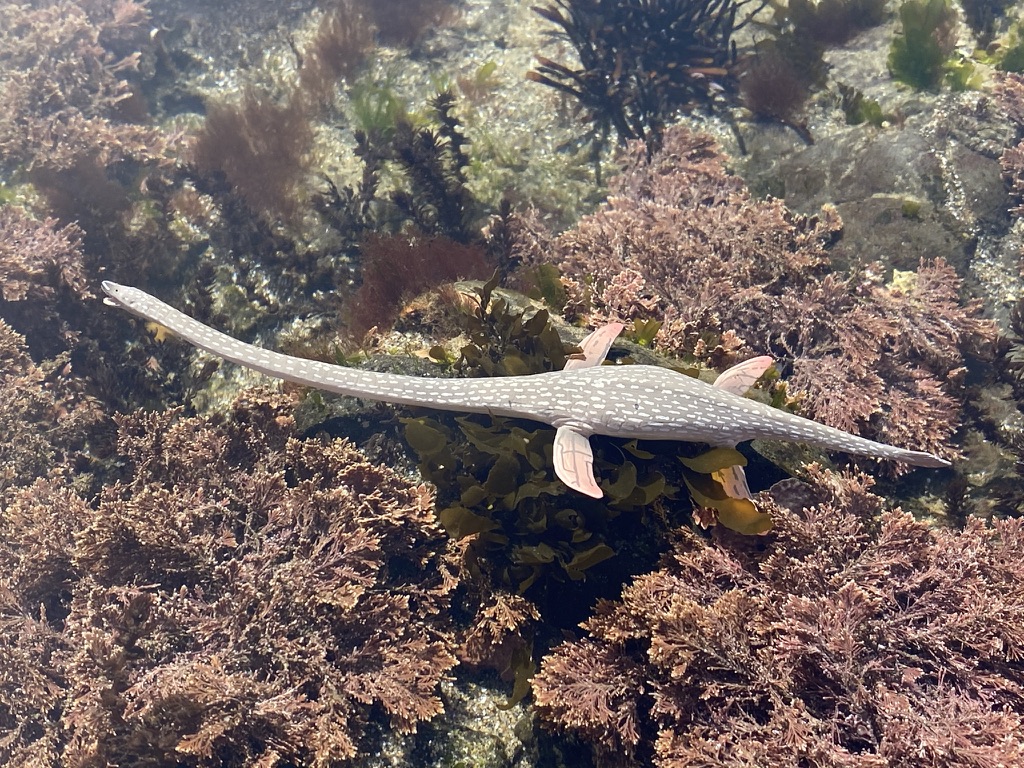
The neck has good musculature especially on the lower half, and there are even some areas where a slight bulging can be seen as if the animal has just swallowed a fish. Once again, the delicate details of the skin along the neck are beautifully done. The neck is posed straight forward with just a hint of a curve towards the left side.
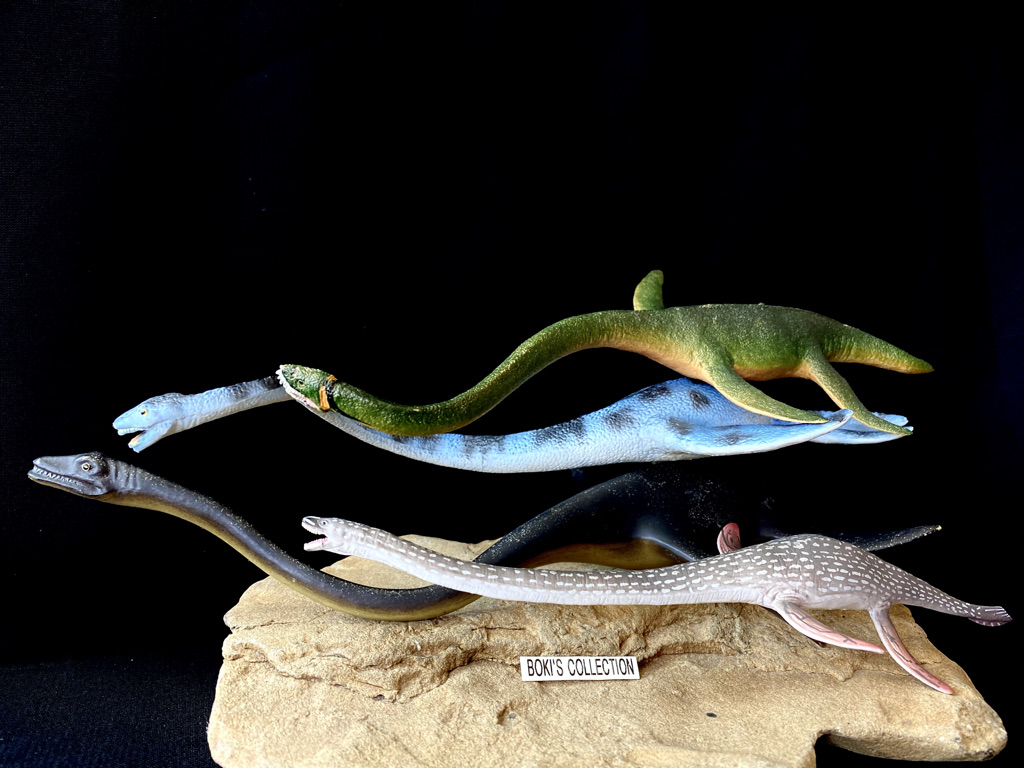
Speaking of necks, one of the most iconic and perhaps memorable for many of us are images of Plesiosaurs with their long necks arched up in an S fashion sticking out of the water’s surface like a swan. As popular as these images are, we now know that this position is highly unlikely. The structure of the neck vertebrae limits flexibility, allowing only limited movement to sideways and downward orientation. Still, we often see figures of plesiosaurs with necks posed in the extreme S position.

The long neck connects to a body that is streamlined and compact. Again, the structure of the bones supporting the main body are arranged and built in a way that limits any form of flexibility. The body is built with more similarity to a leather back turtle or penguin and nothing like a sea lion’s flexible torso. There is also a keel at the top of the back that runs along the spine length that is subtle.

The figure’s body is sculpted beautifully with plenty of details. Most marine reptiles are smooth skinned, so any details take the form of skin folds and lines and the figure has plenty of those. You can see these on the side of the stomach as well as in the area where the flippers attach to the body where they bunch up. So, given the rigidity of the body and limited movement of the neck, the best way to suggest movement is left on the flippers orientation.
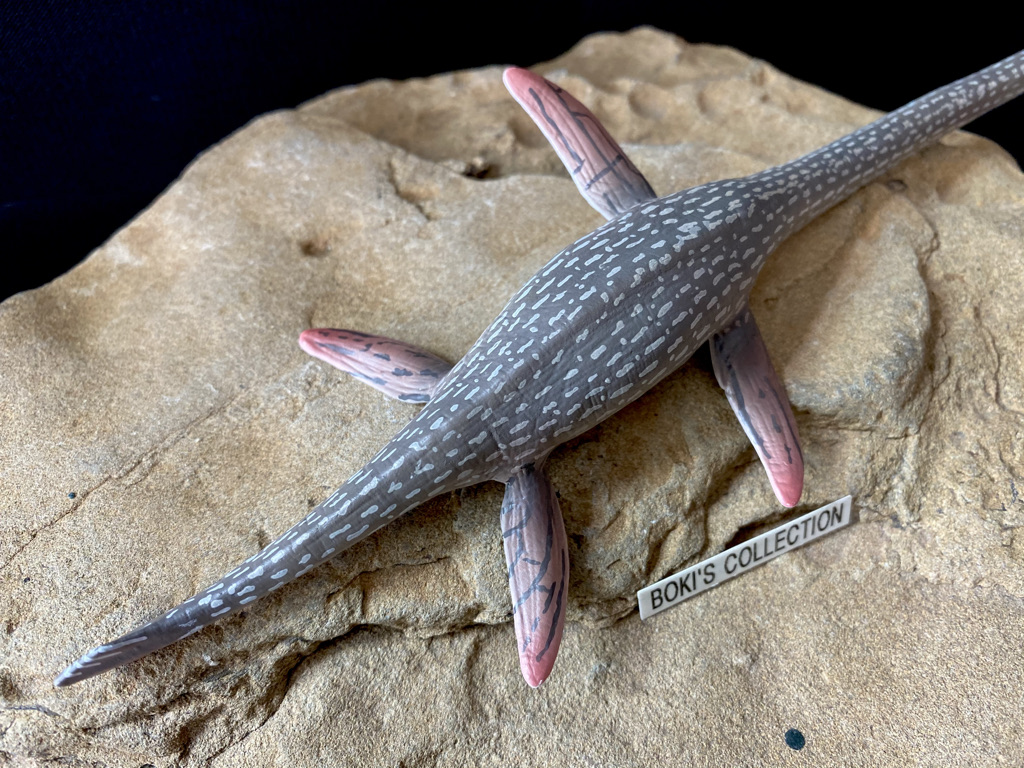
The flippers on the figure look about the right shape and length and posed so that the front is slightly pushing downwards while the back in the act of upstroke push. Elasmosaurus have large paddle-like limbs with long digits and the front ones were longer than those at the back. There are also good muscles at the base of these large flippers, this is an area that often looks too skinny in many figures. There are wrinkles on the flippers that suggest skin folds as well as muscles that suggest tension and movement, on one of the flippers you can even see skin stretched out as it pushes back. CollectA is known for giving some of their marine reptile’s additional surprises such as parasites, but this one does not have any on its body, although one of its paddles does have a small chunk missing.
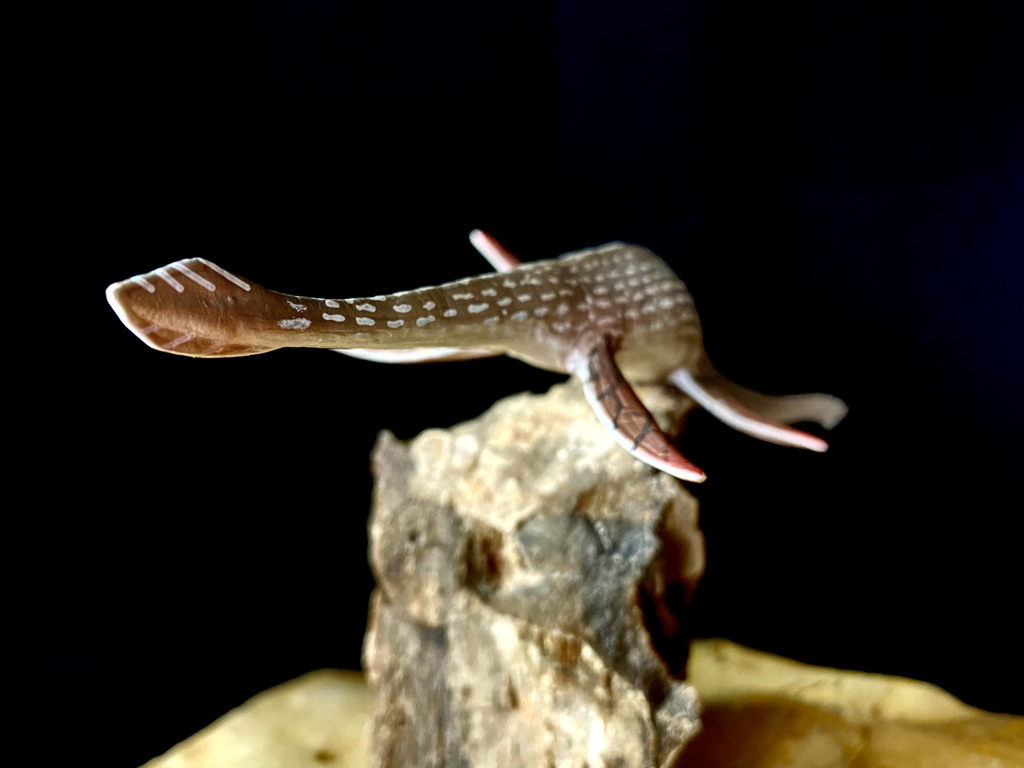
At the end of the body is its short tail. Although the Elasmosaurus fossil does not include its tail, its assumed that it probably would have been the same as its close relatives. Recently, there has been evidence of a tail fluke on some Plesiosaurs, and CollectA have given their figure one. The tail fluke is shapes like a diamond with the upper half taller than the lower lobe.
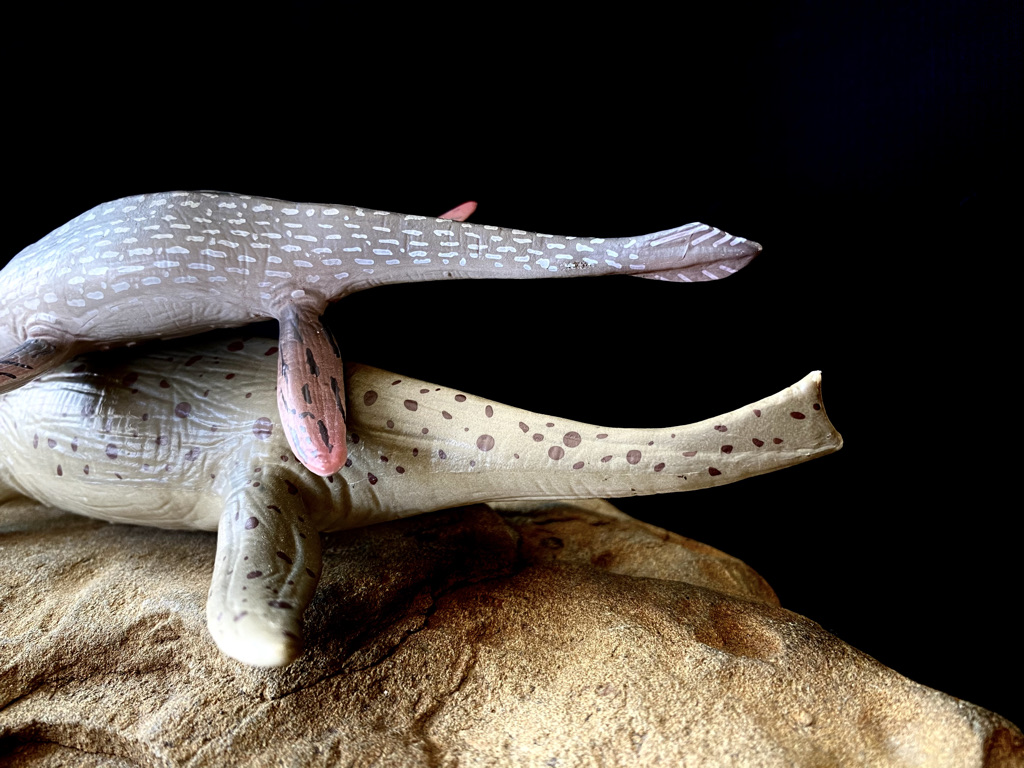
The figure is part of CollectA’s standard size so it’s on the smaller size, but as mentioned, it is full of wonderful details. From the tip of the snout to the tip of the tail, the figure measures 9.5” inches long and from flipper to flipper tips it is 3” inches wide. The neck alone measure 5”inches and the tail 2” inches long. Interestingly, the Safari figure is easily two to three times larger than this figure, but length wise it is about and inch or two longer when stretched out. So, despite this figure being smaller, it is long.
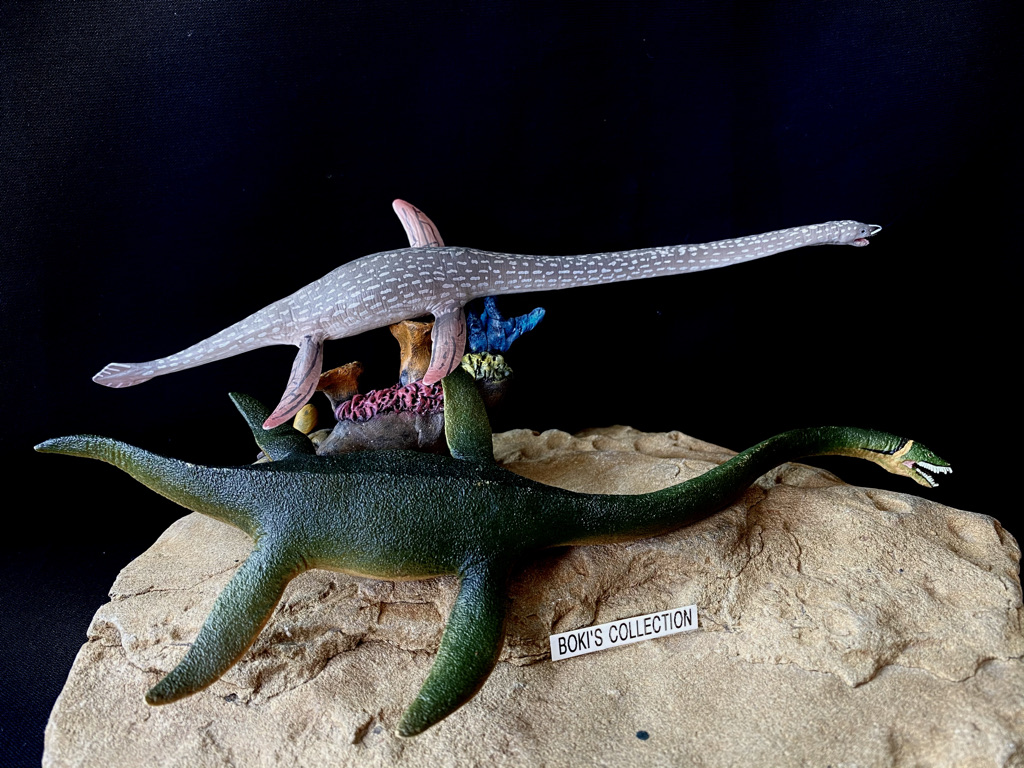
The figure is given a countershading color design that is appropriate for an ocean-going animal. From the head down to the tail, top half is a dark smoky grayish blue color that is very similar to some sharks. It transitions into lighter hues as it moves down the body until it becomes an off-white color as it reaches the belly and underside. There is a very light and subtle reddish-brown hue wash over the entire figure that ties in all the colors together. This wash has some type of metallic sheen to it that really play with the light when you move the figure around, the effect is very similar to a silver fish scales and is very pleasing.
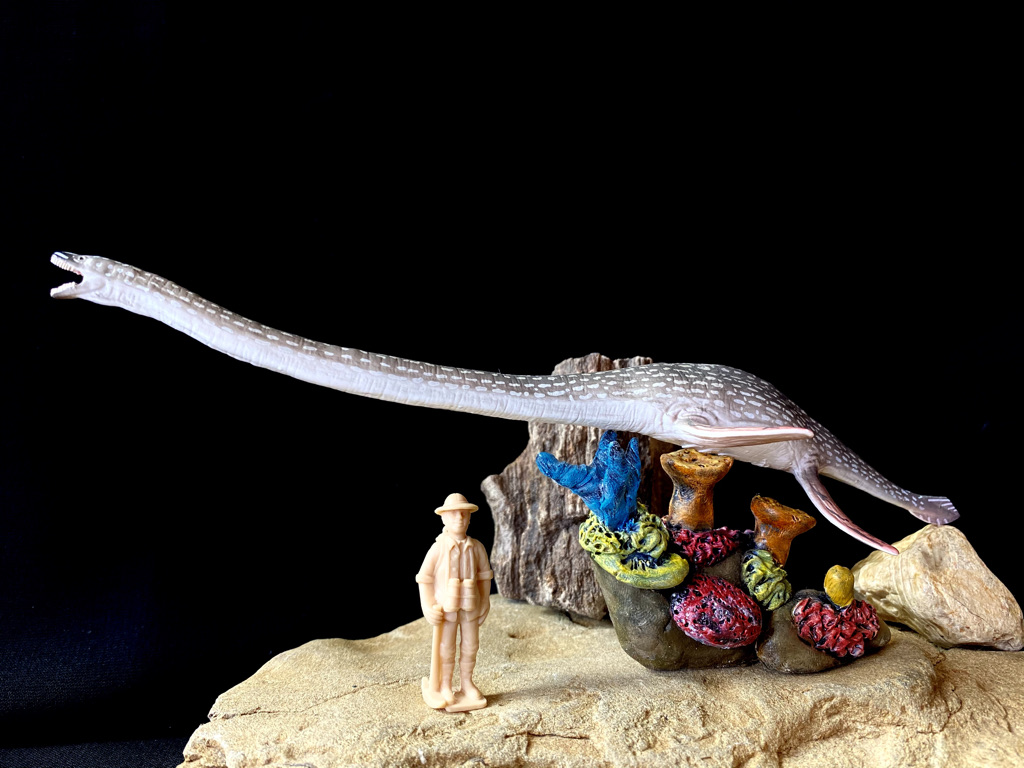
Small horizontal dash/lines of various sizes and length adorn the entire body, some are small and short while other longer and they form a line that runs from the head all the way down the tail. These lines start at the head where an arrow-like lines frame the snout; this actually works fine especially when viewed from the side. In a way it mirrors those seen on the tail fluke. Unfortunately, it is these tail fluke lines that I found a little bit contrived when compared to the rest of the lines seen on the figure. I guess its vertical position and abrupt ends is not as organic as the rest, but it’s not bad.It would have been better if it was given a darker color and an eyespot (perhaps a future modification is in order).

The flippers are given a reddish-brown color which makes them stand out in a nice way. The dark smokey-gray of the body slowly transition to this color as it reaches the flippers and turns a redder hue towards the tips. Instead of the white lines like those seen on the body, there are dark brown unbroken stripe that crisscross the flippers in an interesting fashion.
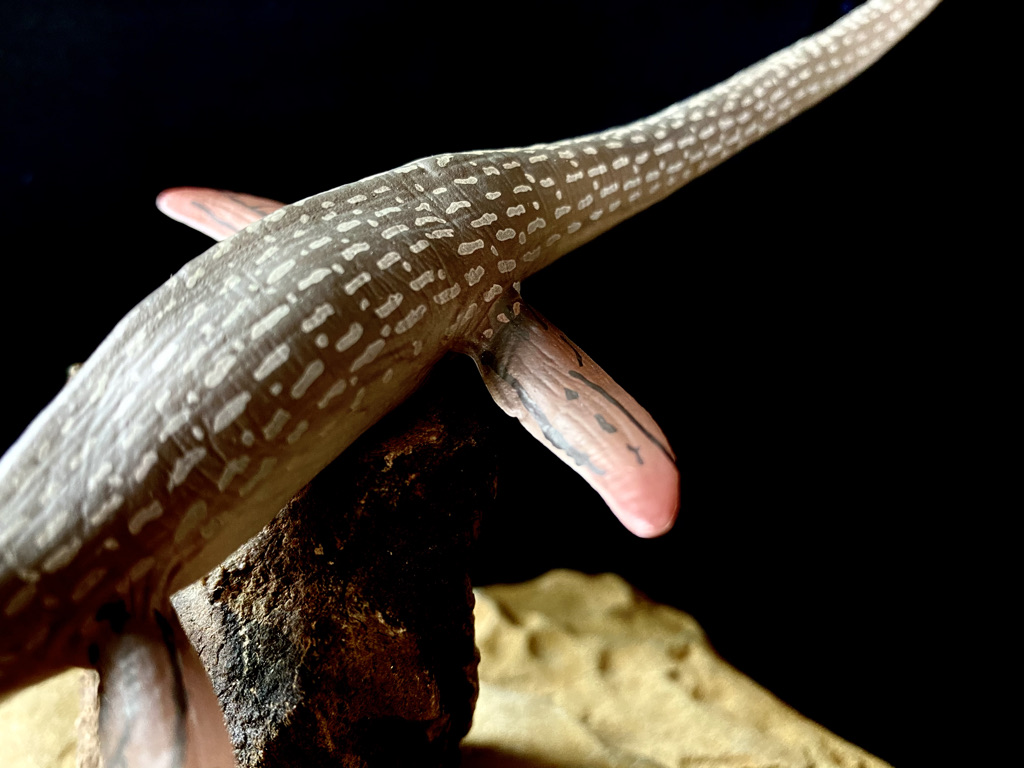
For those of you wondering about the arched back and if this is accurate, well, the answer is not that simple. As it stands, Elasmosaurus is still very much based on very fragmentary fossil material, so we don’t have a good idea of what its back may have looked like. The arched back, like the swan-neck pose, that has been ubiquitous in both art and skeletal mount have been ingrained in our consciousness that we take it for granted. Sometime around 1910’s reconstruction of plesiosaur back took on a more arched or hump like appearance, and it has stuck and became the norm.The truth is, earlier reconstruction by done by Cope himself shows a straight back and not arched. Perhaps the arched back look was seen as more “natural” for some reason so it took off in popularity.
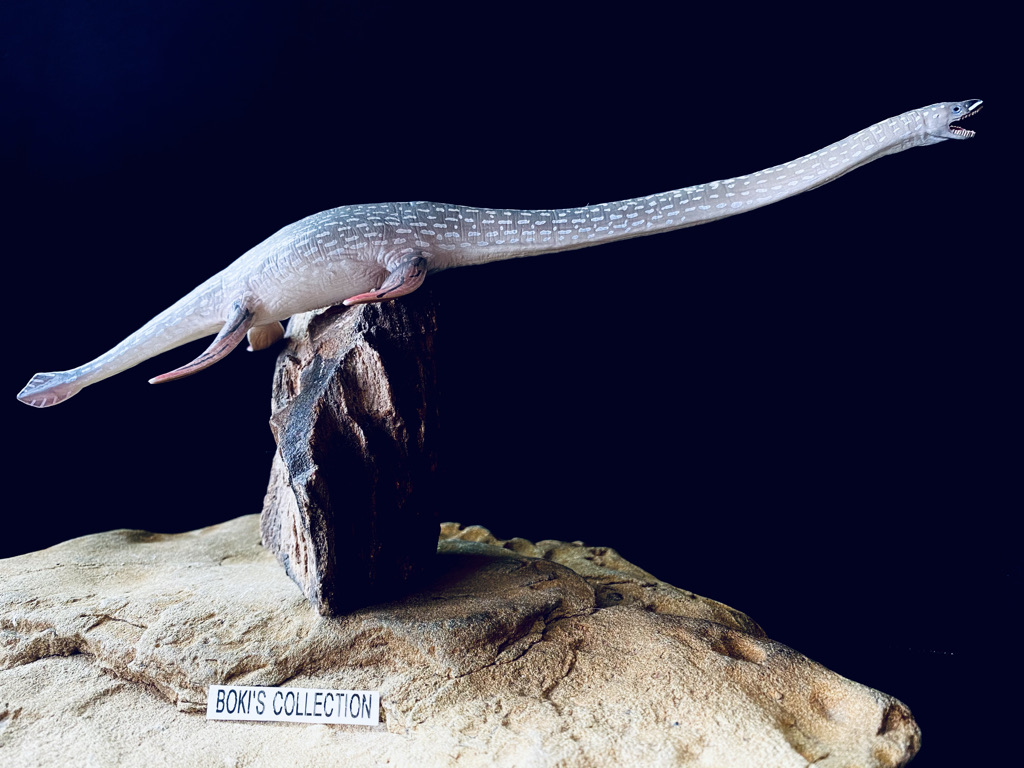
Evidence for the straight back is seen on close relatives and other Plesiosaurs with more complete skeleton, so its highly likely that Elasmosaurus also had this same feature. Due to their body shape and flippers, Plesiosaurs are not good candidate for being fossilized laterally. The majority are preserved on their backs or belly, however there are rare instances where this happens.
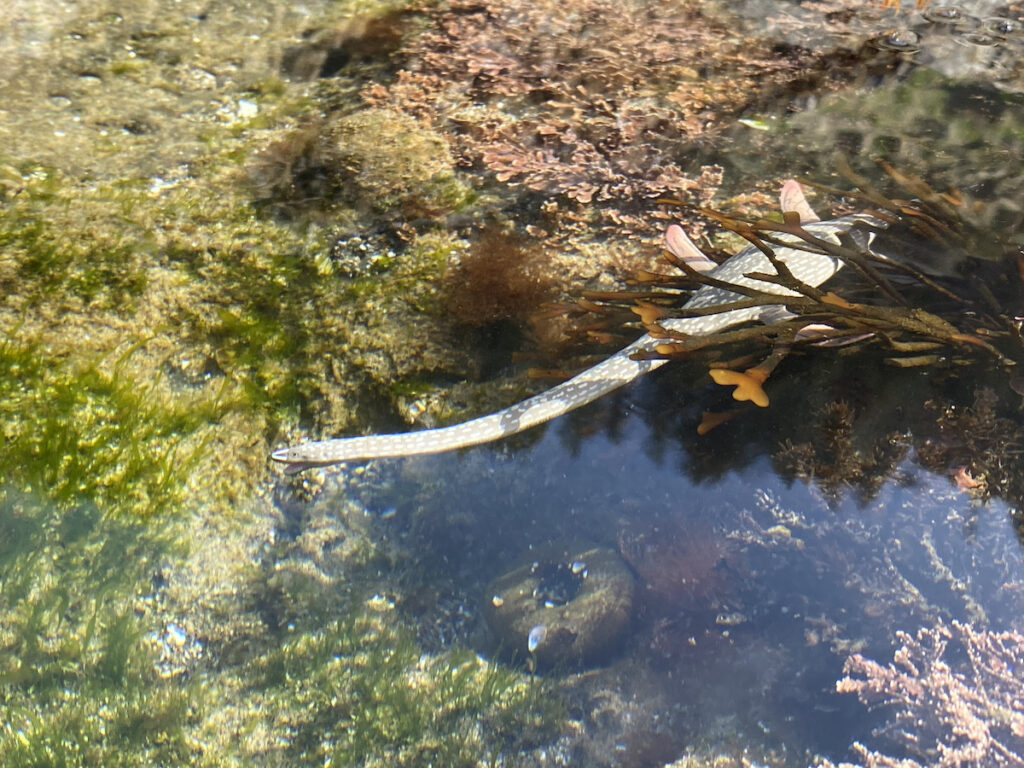
That being said, one should not be so quick to dismiss, at least on Elasmosaurus, the arched back. If there is one thing to be learned from Spinosaurus and Deinocheirus ,two animals that radically split from the “normal assumption of how they should look”, that sometimes reality is full of surprises and that the most unlikely may end up being the reality instead of the conventional assumption. Until a complete fossil of Elasmosaurus is discovered that would support either reconstruction, I try and keep an open mind.
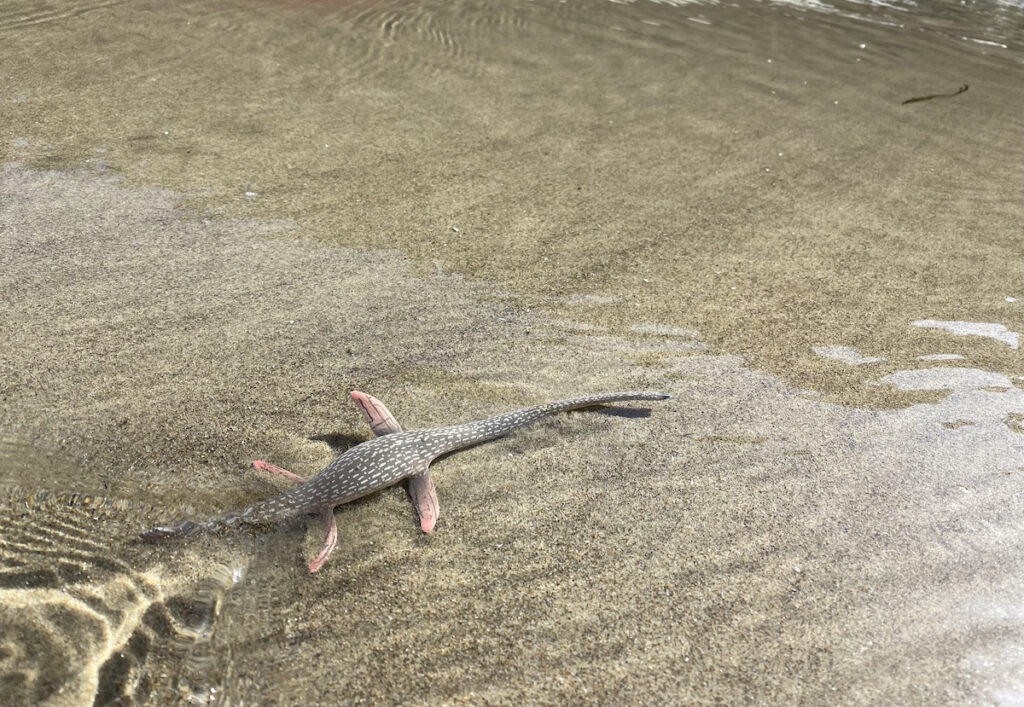
The figure does show slight arch back that is more subtle in person and hard to capture in photos. I’m no expert on marine reptile anatomy, but from the looks of it, the way the back is arched in this figure could easily be within the limits of possibility as it is not too extreme. However, the body overall looks a little too narrow.
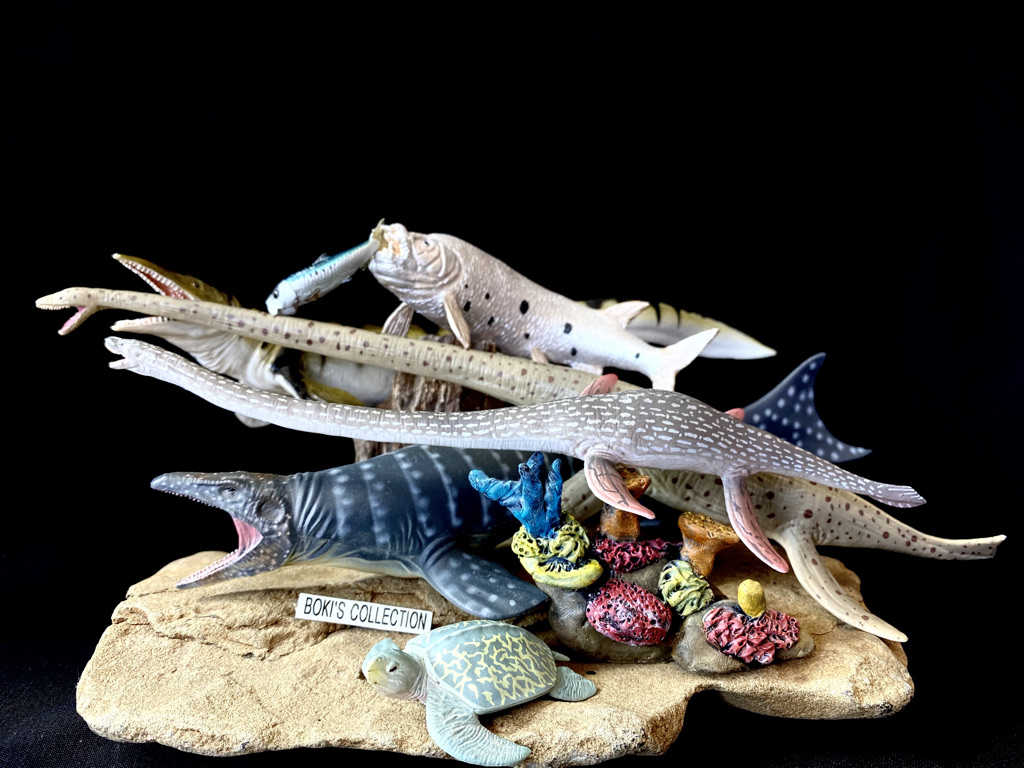
Elasmosaurus live and was part of the impressive marine fauna assemblage of the famous Western Interior Seaway. This shallow sea is famed for its diverse assemblage of animals and includes both terrestrial as well as aquatic. Here, Elasmosaurus shared the waters with other Plesiosaurs such as Libonectes, Styxosaurus, Thalassomedon, Dolichorhynchops; the giant Mosasaurus and Tylosaurus also inhabited the waters and possibly hunted Elasmosaurus. The large predatory fish such Xiphactinus ( CollectA is also releasing a figure of this fish later this year) also hunted these waters as well as various sharks.Above the water, dinosaurs and huge pterosaurs such the iconic Pteranodon and Nyctosaurus soared high above as they hunted for fish.
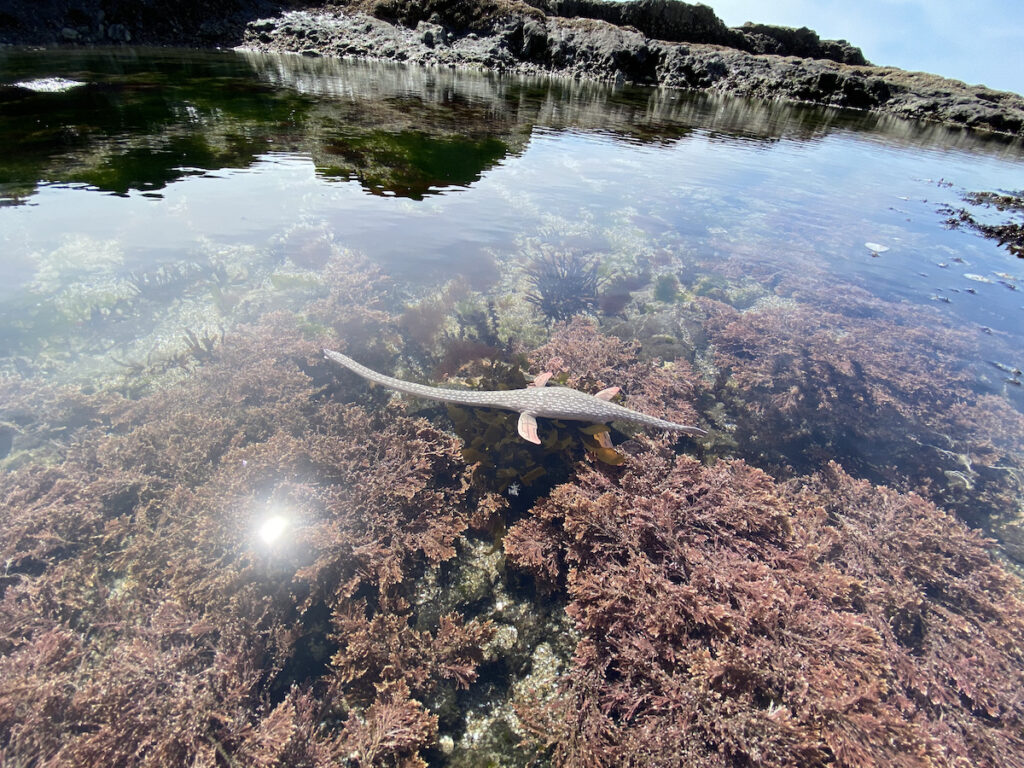
CollectA’s Elasmosaurus figure is a beautiful and dainty looking figure that is full of wonderful details. It is well sculpted and has a pleasing and natural colors.It may not be as big as other Elasmosaurus figures out there, but it easily fits most collection of standard size figures and displays nice with other marine reptiles from the same region and time.In fact with many fellow Western Interior Seaway inhabitants are readily available in figure form from CollectA’s as well as from other brands collection, one could easily make a stunning display that showcase the diversity of this shallow sea.
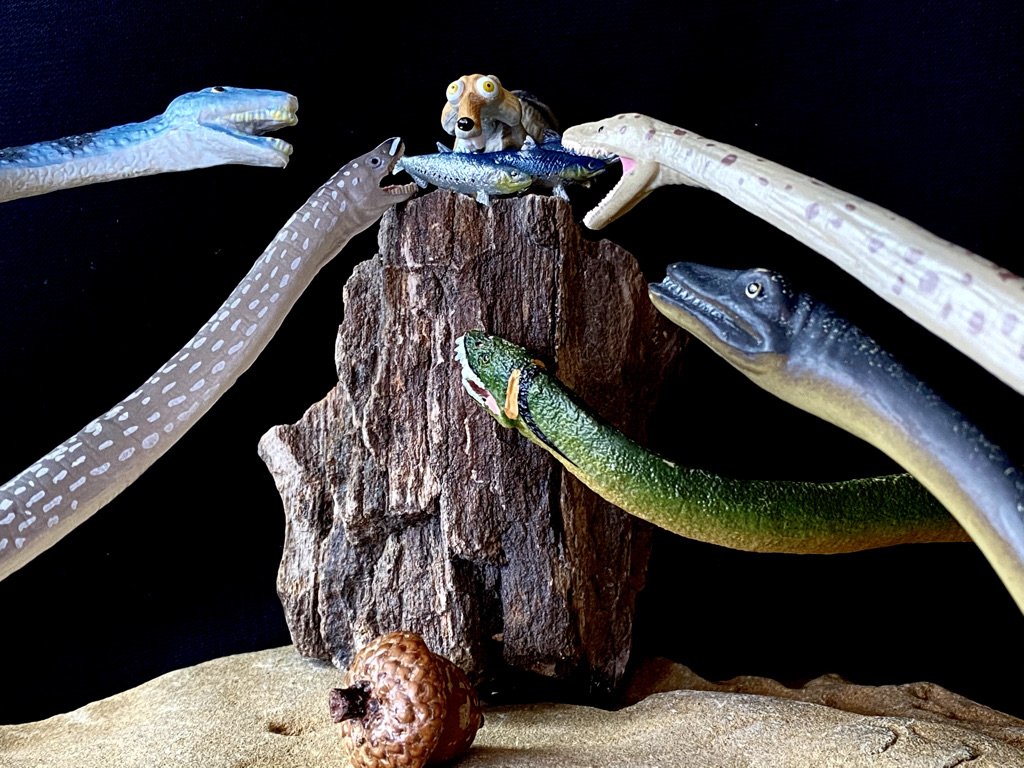
Bonus: The Plesiosaur’s Neck Book
I recently ordered the book The Plesiosaur’s Neck and it arrived much quicker, just in time for this review. The Children’s book market is a competitive market with so many titles competing. In general, I have very few specific children’s book about prehistoric animal, but since this was a special book, I had to get it for my collection.
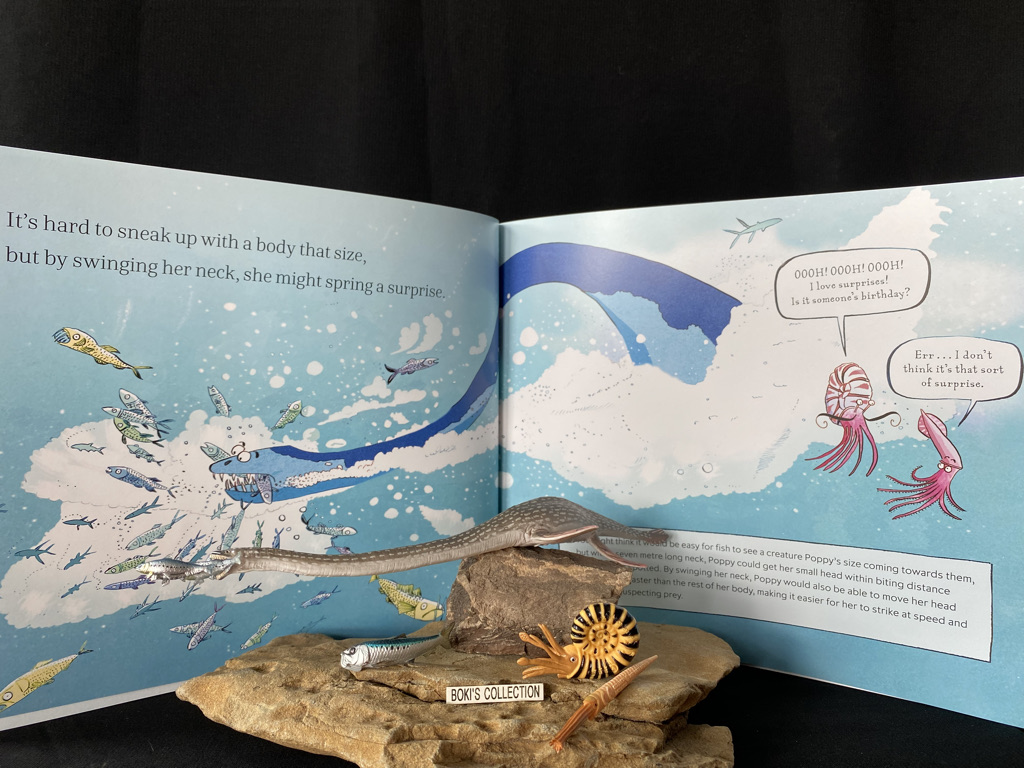
Written by our very own Dr Adam Smith along with co-author Jonathan Emmett and illustrated by Adam Larkum, the book brings to life in an entertaining ways the many facts about plesiosaurs and their kins. It’s a cleverly written book that combines scientific facts with humor that is easily captures kids and adults attention, as well as not be too overwhelmingly scientific (for those not versed on paleontology). The book focuses on Poppy an Albertonectes plesiosaur. She is joined by the book’s narrator,a couple of invertebrates, Alfie the Ammonite and Bella the Belemnite, as well as a host of other animals, both land dwellers and sea going. Alfie and Bella surely nearly stole the spotlight with their witty and often humorous dialogues as they try to answer the question of what exactly is up with the very long neck of plesiosaurs.

The illustrations are simple, vibrant, and yet so full of character that would surely charm and captivate any readers. The text and dialogues are funny and contemporary making it easy to understand and relate to. It’s a great family book that surely would become and instant favorite at bedtime! I highly recommend this book to anyone who have or know a kid, as well as to anyone who enjoys prehistoric animals.
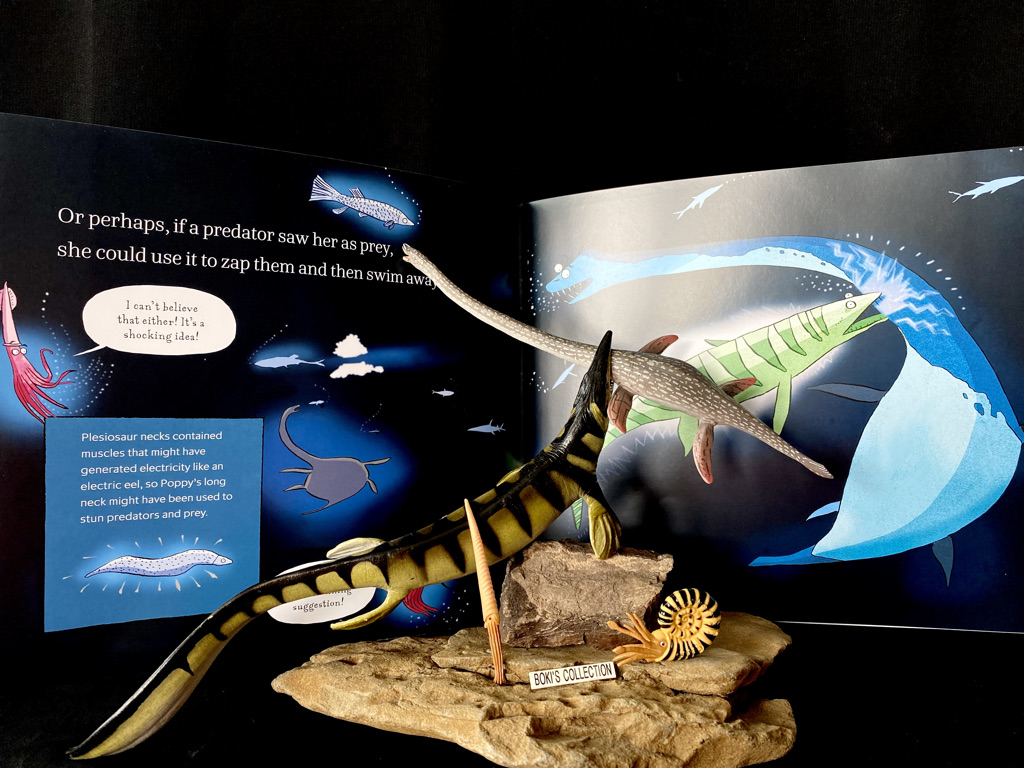
As a tribute, I really wanted to recreate some of my favorite pages illustrations. Unfortunately, Poppy and her co-stars are currently not available for a photoshoot, they are busy swimming the worlds ocean promoting the book! So, our old friend Elasmosaurus agreed to fill in. Hope you enjoy, and go purchase the book!
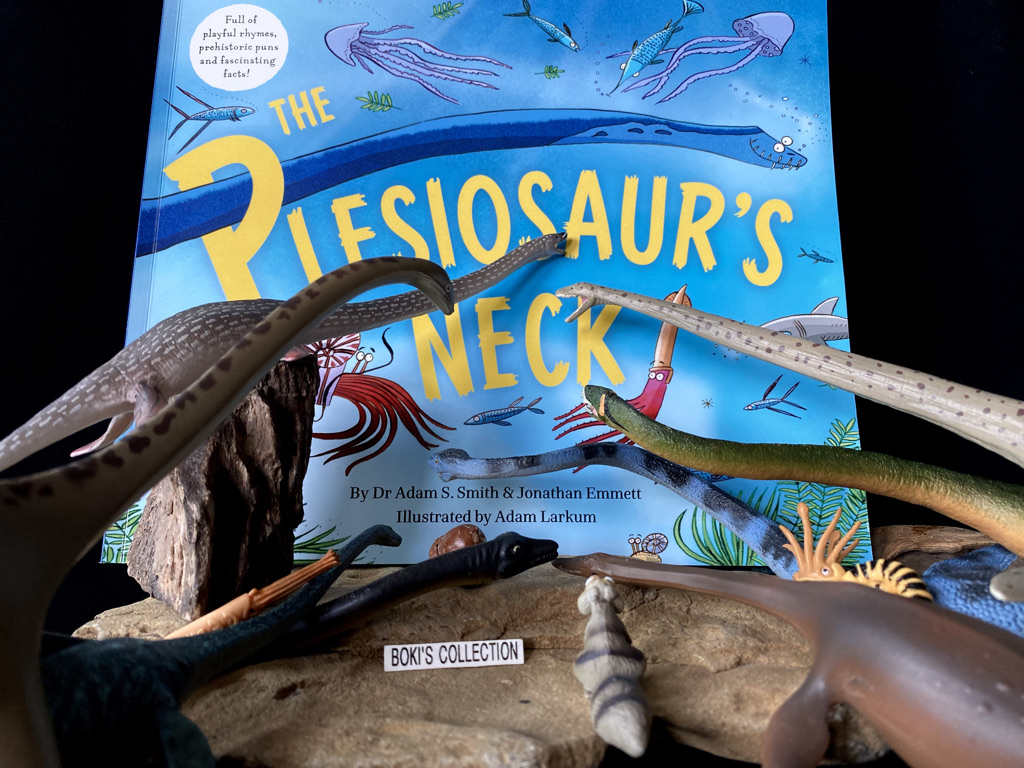
That concludes our review, thanks for reading and I hope you all enjoyed it. I would like to thank CollectA for generously sending me this beautiful review copy! Until the next review, stay safe and healthy! Cheers.
Support the Dinosaur Toy Blog by making dino-purchases through these links to Ebay and Amazon. Disclaimer: links to Ebay.com and Amazon.com on the The Dinosaur Toy Blog are often affiliate links, when you make purchases through these links we may make a commission

Of all Collecta Marine Reptiles you got, I only have Hydrotherosaurus.
Magnificent review, fairly well successful elasmosaurus miniature, the sculpture and painting details make this figure a very interesting collectible figure. Let’s hope to see Collecta’s deluxe version of that prehistoric animal in the future. The book as a final culmination makes this article more enriching. My congratulations Bokisaurus for this magnificent article.
Fantastic review as always!
I love the ‘got fish’ pic!
What a splendidly thorough review! Both the toy and the book look lovely.
wow, a terrific and detailed review of a very nice figure.
where did you get the blue and green fish from that are in the ‘dinner time’ photo?
Fantastic photos in this review, especially the group shots and outdoor pictures. This figure it a lot smaller than I thought it would be, I assumed it would be larger than the Safari Elasmosaurus.
These photos are magnificent! Well done indeed!